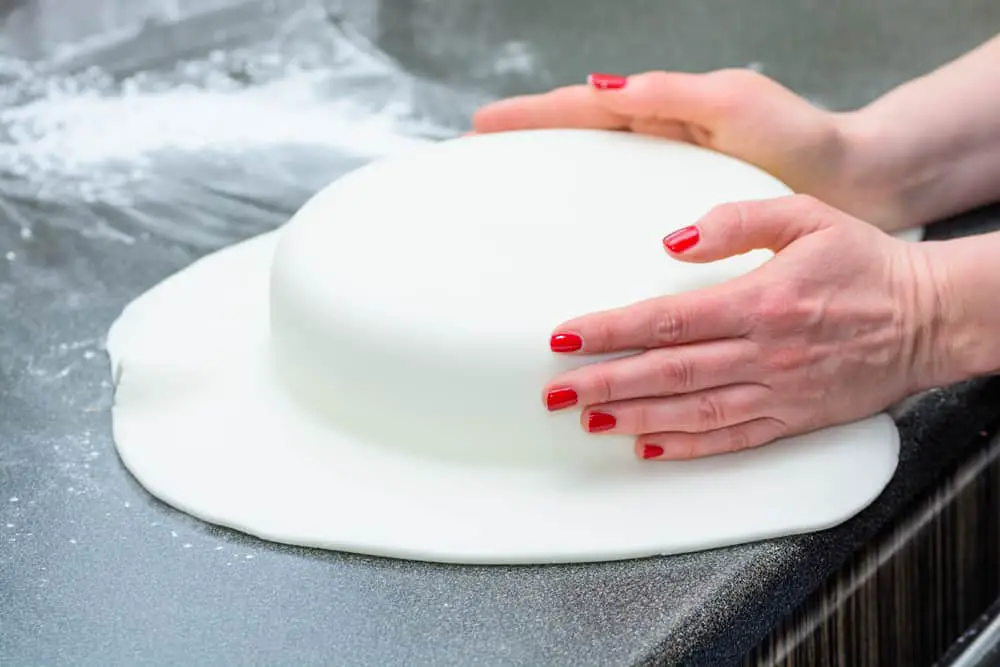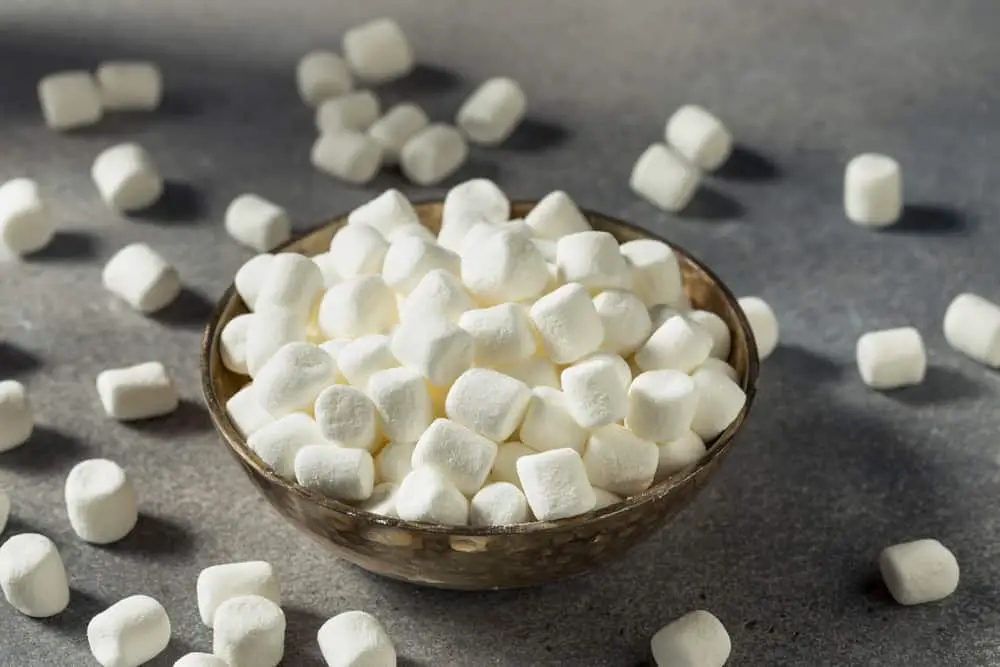Let’s face it: store-bought fondant can be expensive, not to mention too bland in taste and color. If you’ve bought commercial cake fondant and found it too expensive and bland, you can choose to make your own for your next cake decorating project.
But how do you make cake fondant? And what is it in the first place?
What Is Cake Fondant?

Perhaps you haven’t had a taste of fondant in the past, or maybe you have tried it but had no idea what it was, yet you loved it and want to try making some yourself.
Fondant is the thick, usually colored and flavored paste used to cover and decorate cakes. It is a pliable dough-like sheet that you can put onto cakes of different shapes, such as round and square cakes.
Birthday and wedding cakes are the most common fondant-covered cake designs because people like these cakes to be shiny, smooth, and beautifully colored or decorated for these special occasions.
Should You Make Cake Fondant at Home?
There is no harm in making cake fondant at home.
Since most ingredients are readily available in your pantry or a store near you, it can be the best way to make a delicious cake decorator that costs you less.
What You’ll Need to Make Fondant for Exceptionally Beautiful Cakes
The following basic kitchen items will come in handy when making cake fondant:
- Rolling pin
- Cling wrap/plastic wrap
- Large bowl
- Airtight containers
- Wooden spoon
- Vegetable shortening
You’ll also need a smooth kneading or work surface.
Basic Ingredients to Make Cake Fondant
You’ll need the following ingredients:
- Powdered sugar
- Light corn syrup or liquid glucose
- Vegetable glycerin (optional)
- Gelatin
- Vanilla extract to add flavor
- Water, milk, or non-dairy creamer
- Salt
- Meringue powder
There are different recipes you can use to make fondant. You might want to choose a homemade fondant recipe that features items you already have (or mostly have) on hand.
For this recipe, we have indicated what ingredients are optional or replaceable with another product, so you can work with what you already have.
The details of the ingredients are as covered below.
- Gelatin: This ingredient makes the fondant elastic. If you don’t have some available or want something more friendly to a vegetarian lifestyle, you can use agar instead.
- Glycerin: Vegetable glycerin will keep the fondant soft. You can omit it if it’s unavailable, but your fondant will be tougher and require more kneading.
- Light corn syrup: You can replace light corn syrup with the same quantity of liquid glucose.
- Vanilla extract: This adds flavor to your fondant. You could choose another flavor to replace it.
- Non-dairy creamer: This is not a must, but it helps prolong the shelf life of the fondant. You can replace it with water or milk if it isn’t available. However, you’ll use more powdered sugar with water or milk than with creamer, which is thicker.
- Powdered sugar: Also called icing sugar or confectioners sugar, this ingredient should be well-sifted to prevent lumping.
How to Make Your Own Fondant at Home
Below are the steps to follow to make fondant at home.
Note before you start: Fondant dough can be heavy. If your stand mixer isn’t strong enough to handle the dough, you can mix the ingredients in a large bowl and use a wooden spoon to combine them. You can knead the dough into a smooth ball by hand.
- For the dry ingredients, mix three cups of icing sugar, salt, and meringue powder in the bowl of your stand mixer. Stir the ingredients thoroughly with the dough hook and set the mixture aside.
- For the wet ingredients, take a microwave-safe bowl, add the cream, and sprinkle the gelatin on top. Let the mixture bloom for about two minutes. Set the microwave on high and dissolve the gelatin for about 30 seconds.
You have to moderate the heat to dissolve the gelatin. If there’s too much heat, it won’t gel.
Add the glycerin, vanilla extract, and corn syrup to the gelatin and mix them thoroughly while ensuring the gelatin retains some warmth so it’s always in liquid form.
- You can add an edible food color gel of your choice once you finish mixing the wet ingredients if you’ll use only one food coloring for the whole fondant.
You can color the fondant in small batches if you desire several colors. If solid food coloring is unavailable, use liquid color when mixing the wet ingredients. You’ll have to be careful not to add too much liquid.
Kneading the Fondant

In the dry ingredients in the stand mixer bowl, make a hole in the middle and pour in the wet ingredients. Mix them bit by bit at medium mixer speed.
If you used the hand-kneading method, start in the middle of the dry ingredients mixture and keep pouring the wet ingredients mixture while incorporating more of the dry ingredients as you proceed.
You can add a little bit more powdered sugar if necessary.
Make the fondant dough more elastic by adding vegetable shortening or some butter. The fat mixes with the gelatin to boost elasticity.
Transfer the formed dough onto a working surface pre-dusted with powdered sugar. Knead the dough to achieve the right consistency.
If you feel the dough is too dry, you’ll need to oil your hands and the kneading surface with vegetable shortening or butter.
You could also add one or two tablespoons of powdered sugar if the dough feels too sticky, though adding more beyond this point will cause stiffening when the gelatin cools completely.
Cut the ready fondant dough into several potions as desired and put each piece in its own resealable bag.
Since fondant is basically sugar, you’ll need to keep it double-wrapped with a plastic wrap or cling wrap and then store it in an air-tight container to prevent crusting.
Leave the wrapped and boxed fondant portions in the fridge for at least four hours or overnight to allow the gelatin to set for optimum elasticity.
Remove the fondant once the gelatin is set and store it appropriately at room temperature until you’re ready to decorate your cake.
How to Use Fondant Dough
Once you are ready to coat or decorate your cake, take the fondant dough from the fridge and let it rest for some time at room temperature to make it smooth or pliable and ready for kneading.
You might have to warm it in the microwave for about 10 seconds if it is too hard and unpliable.
For the best results, at this point, use vegetable shortening when kneading. You could also add some powdered sugar if the fondant is too sticky.
Dust your kneading space with a mixture of cornstarch and powdered sugar. The fondant should be elastic enough for rolling with a rolling pin and assuming different shapesbased on the shape of your cake.
How to Make Marshmallow Fondant

If you want to make a marshmallow fondant recipe instead of the regular type discussed above, you’ll need some marshmallows.
Here’s how to make homemade marshmallow fondant:
- Put the marshmallows in water in a microwave-safe bowl and microwave them to melt. Remove from the appliance once melted.
- Add powdered sugar to the melted marshmallow mixture and blend the two thoroughly with greased or oiled hands.
- Apply some vegetable shortening on your hands and the kneading surface. Knead the mixture while adding more powdered sugar to achieve the right consistency. Keep kneading until the fondant dough becomes soft and smooth.
- Add some color at this point and roll it out into thin sheets of about one-quarter or one-eighth inch, depending on the size of the dough and the number of cake layers you want to cover or decorate.
